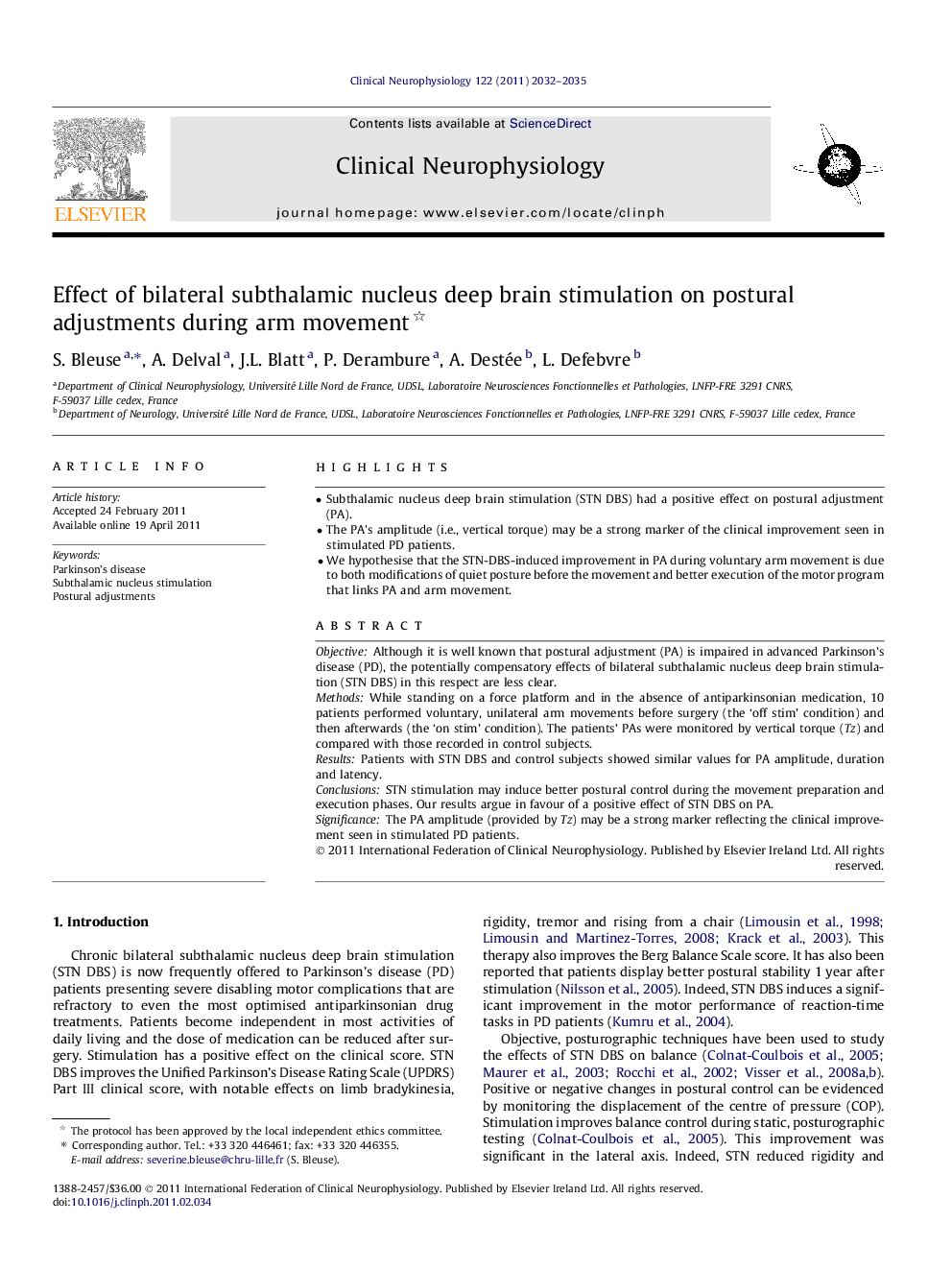| Article ID | Journal | Published Year | Pages | File Type |
|---|---|---|---|---|
| 3045724 | Clinical Neurophysiology | 2011 | 4 Pages |
ObjectiveAlthough it is well known that postural adjustment (PA) is impaired in advanced Parkinson’s disease (PD), the potentially compensatory effects of bilateral subthalamic nucleus deep brain stimulation (STN DBS) in this respect are less clear.MethodsWhile standing on a force platform and in the absence of antiparkinsonian medication, 10 patients performed voluntary, unilateral arm movements before surgery (the ‘off stim’ condition) and then afterwards (the ‘on stim’ condition). The patients’ PAs were monitored by vertical torque (Tz) and compared with those recorded in control subjects.ResultsPatients with STN DBS and control subjects showed similar values for PA amplitude, duration and latency.ConclusionsSTN stimulation may induce better postural control during the movement preparation and execution phases. Our results argue in favour of a positive effect of STN DBS on PA.SignificanceThe PA amplitude (provided by Tz) may be a strong marker reflecting the clinical improvement seen in stimulated PD patients.
► Subthalamic nucleus deep brain stimulation (STN DBS) had a positive effect on postural adjustment (PA). ► The PA’s amplitude (i.e., vertical torque) may be a strong marker of the clinical improvement seen in stimulated PD patients. ► We hypothesise that the STN-DBS-induced improvement in PA during voluntary arm movement is due to both modifications of quiet posture before the movement and better execution of the motor program that links PA and arm movement.
